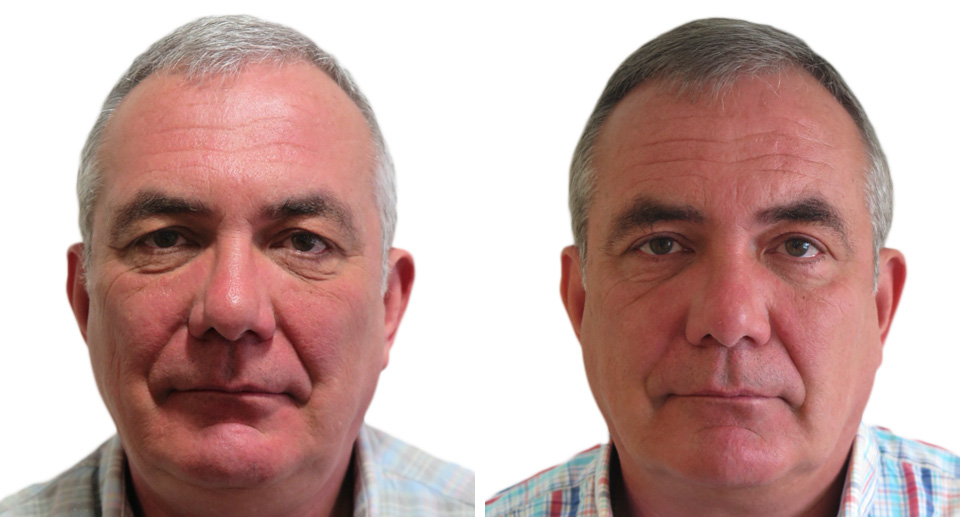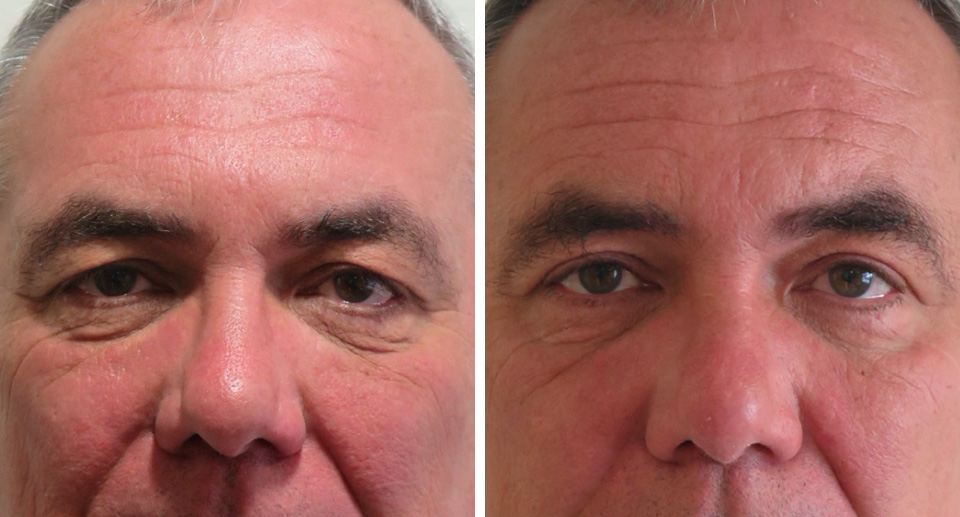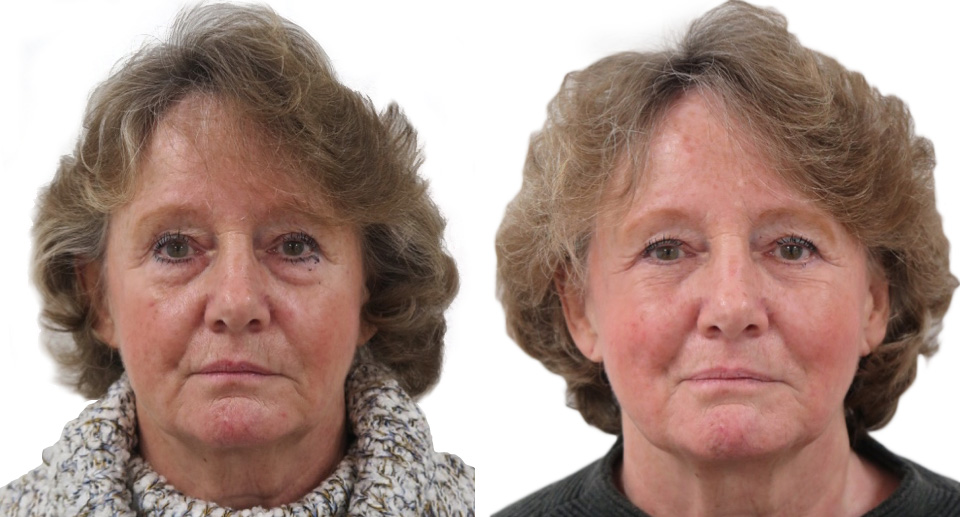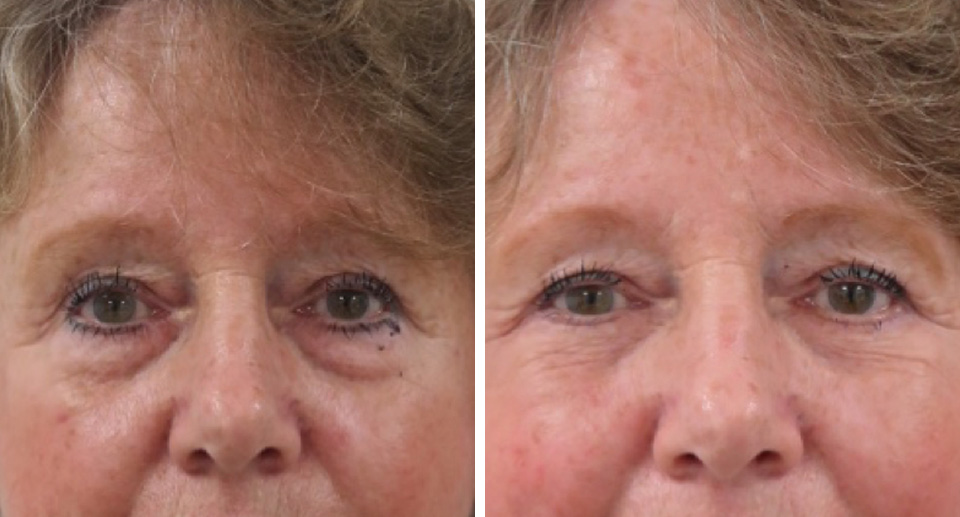Eyelid Surgery (Blepharoplasty)
The effect of ageing on the face leads to loss of skin elasticity and support for the deeper facial structures. In the upper face, this can cause the brow to droop, the upper eyelid skin to become hooded and the lower eyelids to form bags with bulging of the fat beneath the muscle of the eyelids. In some people there is an inherited tendency for the fat beneath the muscle to protrude and so form bags at an early age without necessarily skin excess. All these appearances can give the eyes a tired look and make people look older than they really are.
A blepharoplasty is the medical term for an operation on either the upper and/or lower eyelids to reduce/redistribute the amount of bulging fat as well as excise any excess skin, thereby giving the eyes a fresher and more youthful look. The operation can be performed under local anaesthetic or general anaesthetic. It takes 1-2 hours to perform and can either be done as a daycase procedure or requiring 1 day stay in hospital. The standard operation involves making incisions (cuts) which follow the natural skin creases in the eyelids. In the case of the upper lid this cut is positioned approximately 7 mm above the eyelashes, whereas in the lower eyelid the cut is made just below the eyelash line. The incisions are extended a little way into the crows feet area (smile lines at the outer corner of the eye). In the upper eyelid, the excess skin is excised along with a strip of underlying muscle, and any excess bulging fat located beneath the muscle is also excised. In the lower eyelid, the excess bulging fat is released from its containment under the muscle and is repositioned and allowed to redrape over the lower bony rim of the orbit. Any excess fat and skin can also be excised but this is done to a lesser degree than in the case of the upper lid. The wounds are then closed with stitches which are removed after 1 week and covered with steristrips. In cases where the lower eyelids contain bulging fat but with no skin excess, then the fat can be removed by an incision entirely within the inside of the eyelid. This is called a transconjunctival blepharoplasty. Here, there are no external scars and the wound is stitched with dissolving sutures.
This is one of the most commonly performed cosmetic procedures and has high patient satisfaction and low complication rate.







